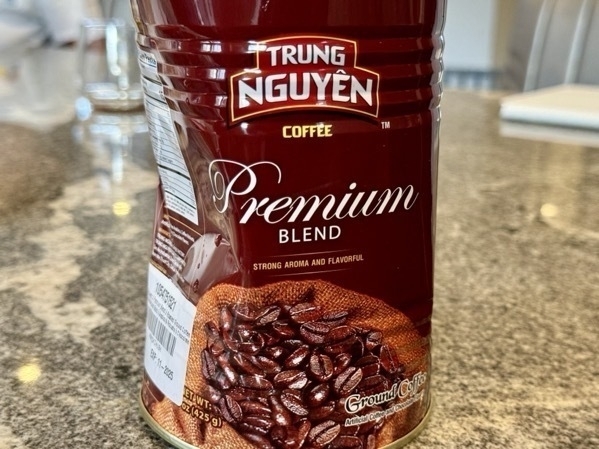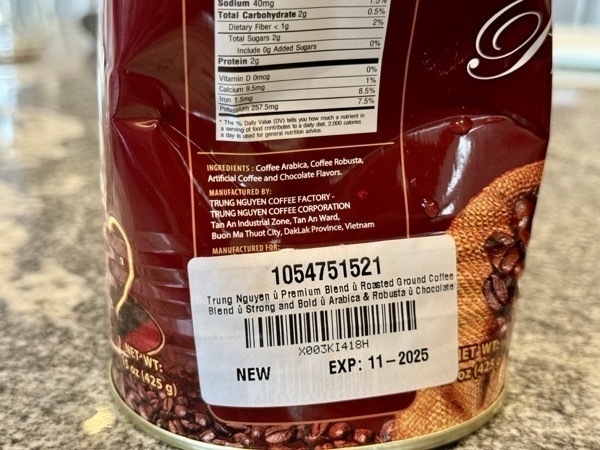On a recent trip to Vietnam, I enjoyed sampling Vietnamese coffee at breakfast. We traveled through several cities, each with unique characteristics. Ho Chi Minh city was a bustling city packed with tourist traps alongside hidden gems. Pho Quoc was an quiet getaway with a lively night market and the best bread I have ever seen at a hotel breakfast. Da Nang was eminently walkable and had top notch restaurants for surprisingly little cost. Despite the diveristy, one thing remained consistent: the nutty, slightly sweet flavor of Vietnamese coffee. It was so different from the flavors I usually associated with coffee. Was it an added spice or secret ingredient? Google searches indicated it was something about the inclusion of robusto beans and the unique characteristics of Vietnamese growing conditions, but I wasn’t convinced. I couldn’t put my finger on it, and the strength of the beverage limited my ability to sample it before I started vibrating from the excess caffeine
Upon returning to the US, I tried to reproduce the taste I had experienced in Vietnam. I went to Nguyen Coffee Supply and ordered a phin (the requisite contraption for making Vietnamese coffee), a variety of Vietnamese coffee beans, and even a matching mug. I tinkered with the grind and water temperature, but the resulting brew lacked that unique character. On a whim, I ordered a can of Trung Nguyen coffee. Most coffee snobs would scoff any purchasing pre-ground coffee, but I needed to understand what I was missing (full disclosure: I actually didn’t realize it was pre-ground before it arrived).
The instructions on the can ask for a total of 65 g of water for 20 g of coffee, which struck me as a small serving given that some of the water would be soaked up by the grounds: of course I doubled it. The resulting sludge nearly filled my phin and refused to yield a drinkable concoction until I gently stirred the mix (well beyond the recommended brewing duration). Despite the suboptimal conditions, I knew: this was it. This was the secret. Whatever was in this mix had the key factor that was missing from my previous attempts.
I grabbed the can and scanned the text for answers. “Coffee arabiica”? That’s just the typical type of coffee bean used worldwide. “Coffee robusto?” I’d tried this before in Vietnamese coffee blends as well as standard espresso blends, and while different, it clearly wasn’t the key. “Artificial coffee flavors?” Who knows what that means, but that in combination with the “chocolate flavors” must be key. In fact, these “chocolate flavors” seem to be exactly what I was tasting. At least this gives me a direction for reproducing those unique flavors.

